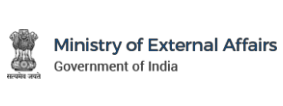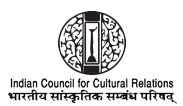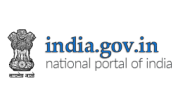India's Defining Moment
Speech to the Chicago Council on Global Affairs
February 28, 2014
1. As a newly arrived ambassador, it is a particular pleasure to address the Chicago Council on Global Affairs. Chicago, I recognize, is the heart of the Midwest which is the heart of America. As the first modern city in this country, it has long attracted people from all over, including Indians. In my country, we associate Chicago most with Swami Vivekananda. So it is entirely appropriate that I come to Chicago early in my tenure.
2. I speak to you at a time when India is preparing for a general election this summer. It is also a period when the Indian economy, after struggling with lower rates of growth, is showing some signs of improvement. And where India's most important foreign policy relationship - that with the United States - is concerned, we are hoping to raise sentiment in the short term even as we work to enhance the level of ties in the medium. In many ways, these developments - India's elections, the economy, and India-U.S. relations - are interconnected. Clearly, we are approaching a defining moment where choices made would have significant implications for India of course, but for the United States and the world as well.
3. First, the elections. The world will see an Indian electorate, now more than 800 million out of a population of 1.2 billion, cast its votes for the sixteenth time since independence. This is in itself an event of considerable significance for a variety of reasons. It is living proof that democratic rights are not just the privilege of the rich and developed. In recent years, it is also a demonstration that economic and social growth does not require a curtailing of freedom. For all its imperfections and frustrations, this Indian political system faces no question marks of either viability or legitimacy. On the contrary, voter turnouts have been as high as 70% and the results of polls have been accepted by all parties. For Americans, these Indian elections should represent a validation of their ideals and principles, that too under the most difficult of conditions. If any of you actually witness the commitment and enthusiasm visible in this mammoth exercise, I can confidently predict that your belief in the future political direction of the world will stand reaffirmed. I stress this point as shared values represent a critical element of the positive chemistry between our two societies. More on that later.
4. Where this year's exercise is concerned, let me make three broad observations. One, roughly half the electorate is below the age of 35 and one in six voters will be casting their vote for the first time. Two, about 350 million Indians have acquired a cell phone since the last elections, raising their level of awareness and connectivity. Three, while urban India still constitutes a third of the total population, rural India is getting more urbanized in its thinking, in its consciousness and in its consumption patterns. The cumulative impact of these factors is of rising hopes and public impatience. That is the challenge that our politics will be addressing in the coming months. This tide of expectations will also help shape economic policies as much as they will foreign policy. All foreign policies have their roots in domestic politics. But the foreign policy of a society undergoing rapid change is especially driven by priorities at home.
5. The state of the economy is central to any analysis of India's problems and prospects. In the last nine quarters, GDP growth came down from 7.5% to 4.4% in Q1 of the current financial year - we follow the April - March cycle. It has improved to 4.9% in Q2 and we hope to reach about 5% at the end of the year. Of course, world economic growth has broadly declined in this period but we do accept that there are issues that need to be addressed more effectively at home. Containing the fiscal deficit (at 4.6% of the GDP) and the current account deficit (at $ 45 billion) are among the key priorities. Exchange rates remained stable even in the face of QE tapering challenges, though they had slid the year before. Exports are up by 6.3% but worryingly, import trends point south. Agriculture including food grain production has done well but manufacturing remains seriously weak. Inflation, especially food inflation, is another concern even if it has come down marginally in recent months.
6. For investors, both domestic and foreign, it should be an encouraging sign that process challenges are now being tackled. Last year, 296 infrastructure projects worth more than $ 100 billion were cleared in an effort to expedite their commercial operation date. Important initiatives like the National Manufacturing and Investment Zones and the Delhi Mumbai Industrial Corridor are reflective of the realization that we need to create 100 million jobs in the next decade. There is also a recognition that with current account deficits continuing in the foreseeable future, the role of foreign investment in accelerating our growth rate is very important. That makes FDI a key issue in Indo-US ties even as it underlines the centrality of the United States to our foreign economic policy. Any Government coming into office after general elections will naturally put nation building as its first priority. Maintaining and accelerating growth will be of great significance. Encouraging investment, expanding manufacturing, modernizing infrastructure, enhancing skills development, upgrading technology and promoting innovation will be amongst its many facets. The United States can be an indispensable partner on every score. None of this, however, is a foregone conclusion. They will only be outcomes of a relationship that is assiduously tended by constant gardeners.
7. Which then brings me to the state of our ties. As someone who has been associated with it for more than three decades, I cannot but marvel at the distance we have come. There is a substantial convergence in our geopolitical outlook and we have not allowed differences in other fields to limit the extent of cooperation. As democratic and plural societies, we have also come together to meet challenges posed by religious and political extremism. When it comes to the protection of the global commons, our interests again appear largely aligned. The United States has emerged in the last eight years as a major supplier of military equipment to India and our armed forces probably conduct more exercises with each other than any other two militaries. Our trade in goods has grown by about 250% since 2005 and in services by about 350%. Together, they are around $120 billion, roughly double what India has with its next highest trading partner. Our investment story is no less encouraging and the stock of U.S. FDI in India is estimated at US$ 50 billion. Indian FDI in the U.S. has grown significantly in the last decade and is now around US$ 25 billion. The engagement between our governments and civil society have both broadened enormously, giving rise to mechanisms and initiatives that cover many areas of activity. The Indian American community, with an estimated 3.18 million US nationals and 1.27 million Indian ones, has been a particularly effective bridge. Simply put, all these developments together have changed the chemistry of our ties.
8. This transformation has come into being over a period spanning three different Administrations at the American end and two on the Indian one. Different polls give credence to this view by persistently reporting high approval ratings of each other over many years. And if one looks ahead, this would only grow further. The challenges of shaping the Asian and global security architecture will increase, not lessen in the foreseeable future. The Indian economy will continue to offer business opportunities to American companies, surely more than they do today. The knowledge economy is going to bind our institutions closer. And the community bridge will definitely become broader. This is not to say that we don't have our share of issues. But I would argue that even accepting them at face value does not detract from the proposition that our ties have irreversibly changed for the better.
9. Even as I came to Washington last December, I could see that efforts to add substance to our ties continue unabated. Trade figures for 2013 rose marginally in an otherwise depressed environment. Transfer pricing clarifications, Safe Harbour rules, domestic content policy changes and new investment caps all helped to ease investor concerns. Defense ties progressed further with additional purchases of C130 aircraft and preparations underway for a fresh round of exercises. My meetings at the Pentagon contemplated more effective transfers of technology and even co-production. I went to Sabine Pass on the Louisiana-Texas border to visit a terminal from where US gas supplies would begin flowing to India in 2017. In the process, I learnt that American LNG, which could soon account for 40% of India's current imports and 15% of its total gas consumption, could actually become a game-changer. And earlier this month, it gave me some satisfaction to see that we had resumed our discussions on a bilateral investment treaty and re-engaged on tax disputes. Very little of these good tidings, however, got any play in the public domain. In fact, I suspect it is news to even those who track our relationship on a daily basis. And that brings me to the prevalent picture of our ties today.
10. Consider the five big stories of my limited two-month tenure. They are the incident involving one of our diplomats in New York, the downgrading of India's aviation safety status, attacks on our pharmaceutical industry, the US filing a WTO complaint on India's solar industry and Congressional hearings on market access in India. It is not my case that these issues are not important. In fact, each one has not just significance but even lessons for the relationship. But it is my assertion that such headlines are not representative of the totality of our ties. What they actually do is to present a skewed picture of what is being built on a solid foundation of converging interests. We could well take the view that this is just another case of bad news being news and good news being detail. But I do believe that there is more to it than that.
11. The reality is that the Indo-US relationship is busy coping with the challenges of normalcy. Sadly, we have no great problem in our ties to solve, nor a crisis to defuse. There is no big idea either in the works with a transformational potential. So, in an era where the news cycle becomes a barometer of ties, this has led to the relationship dropping off the radar, and being left to political operatives, instant market analysts and social media. Since they have become arbiters of the state of international relations, life is apparently defined by extreme outcomes. Our ties, for good or bad, are however currently positioned in the median zone. The rest of us - who think seriously about long-term strategic relations - therefore, have a problem on our hands.
12. Now, this is reinforced by the fact that the tenor of our discourse is dictated to a large degree by the times in which we live. And the overwhelming reality is that after 2008, the US has turned very much inwards, as indeed have many other nations. This is a consequence of economic difficulties at home and the fatigue of two wars over an extended period. As a result, immediate recovery priorities dominate the agenda. In many ways, that is understandable and ideally, the solution is to await and perhaps even facilitate that recovery. But in the meanwhile, the partners of the US - not just India - come under pressure. Their response, of course, cannot but factor in their own imperatives and interests. The results are there for all of to see - a de-strategising of foreign policies in favor of bread and butter concerns. A globalized world is also an infectious one and it should come as no surprise if others respond in an equally hard-headed manner to the diplomacy of demands. That growth in India slowed down during this period has not helped. Given the domestic climate in both countries, it was not altogether a surprise that the Indo-American narrative got bogged down in trade and investment disputes.
13. We cannot wish this reality away and the sensible thing to do is to switch to a problem-solving mode. But to do that, we need to get off public argumentation platforms where we find ourselves more often than is good for our ties. There also has to be some acceptance that there is a context in which we both operate. If tax issues loom large in the business relationship between our countries, let us not forget that enhancing revenue is not a goal of the Indian Government alone. And if business models are based on minimizing tax obligations, they can hardly expect to pass unchallenged, in India as much as in other countries. The pharmaceutical field has emerged as another area of contention. Details apart, the underlying reality is that affordable health care cannot be the prerogative of a few. Demands are a two-way street and don't expect that Indians won't complain. We actually have a natural skill in that department. Our concerns include immigration reform provisions that attack our service industry's viability in the US, revenues forfeited by the absence of progress on a totalisation agreement, and restricted market access. Localisation too is apparently an issue where preaching against it abroad does not preclude practicing it at home. My sense is that India greatly values its reputation as being open to international business. Concerns perceived to be legitimate will be addressed and that has actually been our recent record. But it would be a mistake to pile on public pressure, especially through a misrepresentation of facts.
14. This then brings me to the choices that await our relationship. There is the immediacy of issues we need to work through. But there is also a future beyond that, one built on the transformational factors I had earlier identified. Those who identify with Indo-US ties because of shared values are pitted against others in the US trapped by the rigidity of regimes, or in India, by suspicions of the past. Institutions that have deliberated carefully on their interests confront the passing compulsions of those looking to score quick points. Where 'political' America is concerned, arguments of values and interests enable India to pass the smell test quite comfortably today. I am also confident that national security structures in both nations have enough clarity about our convergence to see them as the basis of a reliable partnership. Translating the big picture into standard operating procedures is the real test of the long-term. Business issues are admittedly more contentious but if we can grow the scale and quality of our economic interactions, I suspect the volume and intensity of complaints will correspondingly decline. Much, therefore, depends on the extent and pace of the growth cycle at home. Where broader ties between our peoples are concerned, the more we do, the more we can raise our sights. The past record bears out that the US can be a truly valuable partner in the transfer of knowledge and the building of capabilities.
15. While the Indian American community has been an effective bridge and India's economic growth has made it more relevant to American business, the heart of our ties lies in geostrategic convergence buttressed by shared values. One does not have to be an optimist to predict an American recovery in the near term. Its innovation capabilities and energy future speak for themselves. But even that America will have to approach the world with a more partnership-based approach. The dispersal of power will be broader, particularly in Asia. And effective partners for the United States are in less abundant supply than in the past. Ensuring a favorable balance of power and contesting the pressures of extremist politics are objectives common to our two countries. As maritime powers, there is a ready arena available to demonstrate our shared goals. But all of this is predicated on the assumption that US policy remains steadfast in its belief, held over 15 years, that India has a value in itself. This is not that long a period and when there is loss of focus, artificial and untenable regional constructs can sometimes resurface. It may be India's defining moment but the decisions that will determine the relationship's future are not just India's alone.
16. Indo-US ties need to be worked upon at different planes. There are pressing issues on the immediate agenda which require more give and take. But while doing so, we must not lose sight of the larger connect that provides an enabling environment where more ambitious visions could unfold. That is certainly my operational plan and I would like to believe that people here are equally positive. Thank you for your attention and I would be glad to take questions.
*****







